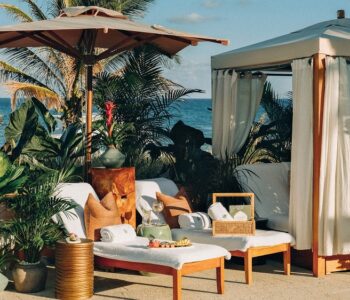
The original water garden, built in 1901 on the site, was called Kolam Dirah. It had been used by the old raja for exorcism rites, but the municipal follies put an end to all that.
Last month I was interviewed for a French cultural television documentary about the Taman Sukasada water palace of the last raja of Karangasem, in Ujung, East Bali. I was interviewed as an art historian and landscape designer. By chance, I have also known four of the twelve sons of the last raja, one of whom, Professor Anak Agung Putra Agung, is still alive. During the 1980s, when I always danced the part of the envoy of the Dutch governor in Batavia at the annual Dance Academy production of ‘Puputan Badung’, I used to borrow the sabre of another son, A.A. Ketut Karang, former Head of Denpasar Police. Another son — who was married to an exotic princess from Singapadu — was former Indonesian ambassador to Argentina. 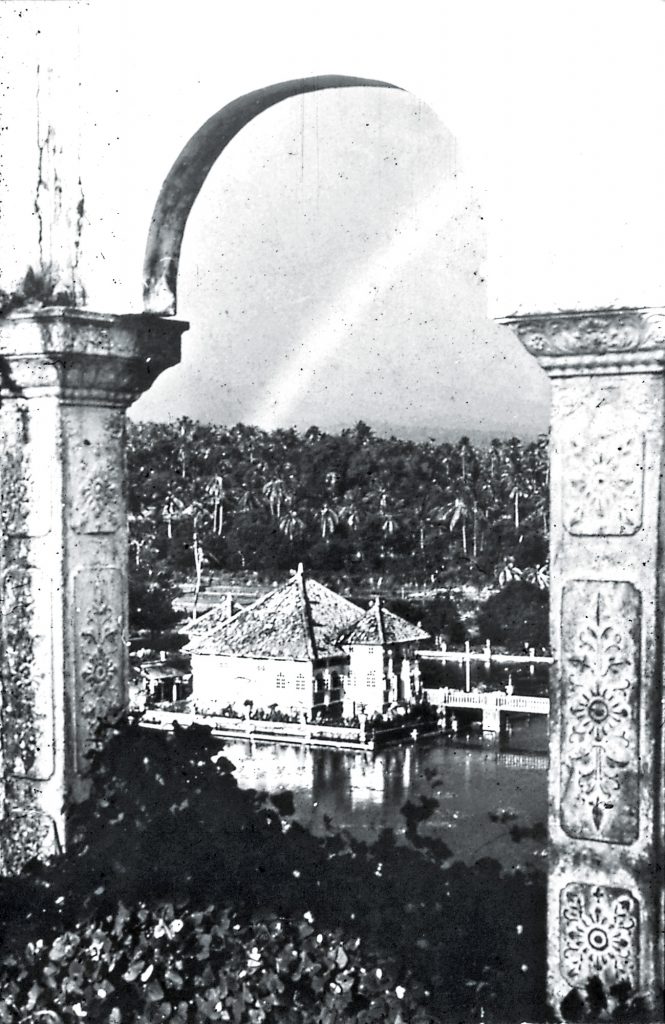 But my closest acquaintances were Dr A.A. Made Djelantik, former head of the Bali Health Department, and W.H.O. Malariologist, who lived in Renon, Denpasar, with his Dutch wife Astri and five children. All remain close friends. Three of the children — Widoer, Madelief, and Merti — now live in Europe and the US; the eldest daughter, Dr Bulantrisna, a retired E.N.T. specialist, now performs classical legong dances with her Jakarta-based troupe. All three sisters were classically trained in legong by their generation’s top gurus. I am bothering to share all this just to show the depth, complexity and influence of these major puri (palace) families in Bali — a fact often misunderstood by expats and Balinese alike.
But my closest acquaintances were Dr A.A. Made Djelantik, former head of the Bali Health Department, and W.H.O. Malariologist, who lived in Renon, Denpasar, with his Dutch wife Astri and five children. All remain close friends. Three of the children — Widoer, Madelief, and Merti — now live in Europe and the US; the eldest daughter, Dr Bulantrisna, a retired E.N.T. specialist, now performs classical legong dances with her Jakarta-based troupe. All three sisters were classically trained in legong by their generation’s top gurus. I am bothering to share all this just to show the depth, complexity and influence of these major puri (palace) families in Bali — a fact often misunderstood by expats and Balinese alike. 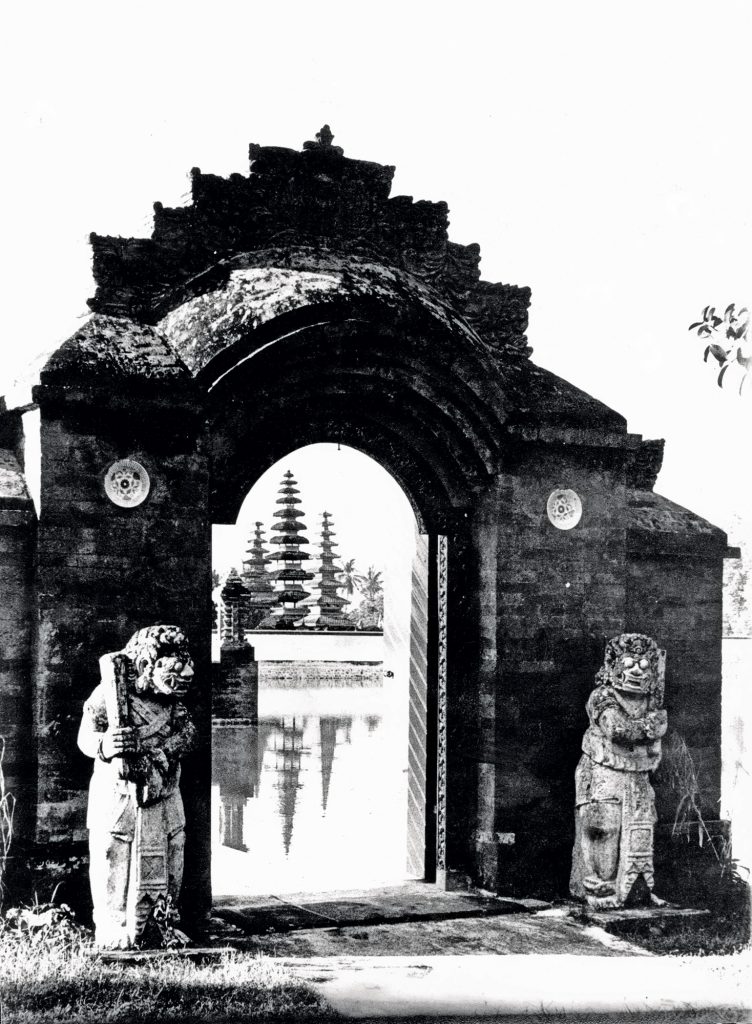 During my research on the water-gardens of the Karangasem family — two in Bali, and two built by their ancestors in West Lombok during the 18th and 19th centuries — I discovered that Taman Sukasada was actually designed by a Dutch colonial architect, Van Den Hentz, together with a Chinese architect, Loto Ang. Dr Djelantik once told me that Loto Ang had been sent by the ruler of Canton, in China, in the early 1920s as a gift to his father.
During my research on the water-gardens of the Karangasem family — two in Bali, and two built by their ancestors in West Lombok during the 18th and 19th centuries — I discovered that Taman Sukasada was actually designed by a Dutch colonial architect, Van Den Hentz, together with a Chinese architect, Loto Ang. Dr Djelantik once told me that Loto Ang had been sent by the ruler of Canton, in China, in the early 1920s as a gift to his father. 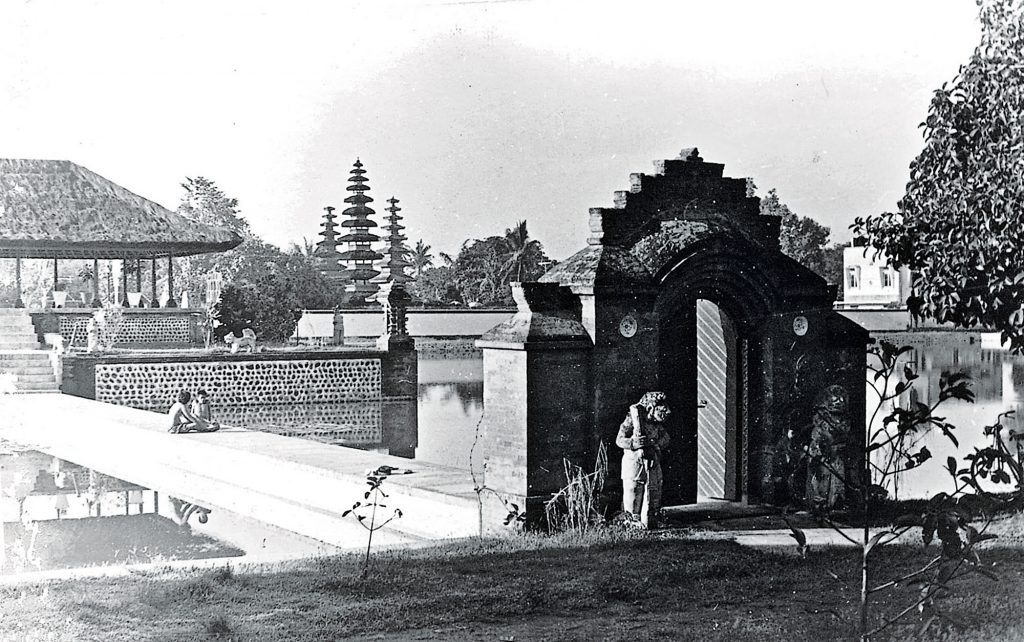 Together with a dozen or so artisans they rebuilt much of the Puri Agung palace in neo-Chinese-Balinese style, and added a colonial style living pavilion, called the Bale Materdam, with an elaborate Chinese-style carved door. All survive to this day. That Chinese door was copied in palaces all over the island. The French researchers were keen to attribute all sorts of cosmological significance to the layout of Taman Sukasada — something with which I could not agree. The water palace, according to all accounts, was just a pleasure garden with reception pavilions. Limited meditation was done there.
Together with a dozen or so artisans they rebuilt much of the Puri Agung palace in neo-Chinese-Balinese style, and added a colonial style living pavilion, called the Bale Materdam, with an elaborate Chinese-style carved door. All survive to this day. That Chinese door was copied in palaces all over the island. The French researchers were keen to attribute all sorts of cosmological significance to the layout of Taman Sukasada — something with which I could not agree. The water palace, according to all accounts, was just a pleasure garden with reception pavilions. Limited meditation was done there.  The original water-garden, built in 1901 on the site, was called Kolam Dirah. It had been used by the old raja for exorcism rites, but the municipal follies put an end to all that. There is a temple inside the park in the cosmologically-significant north eastern corner, and a pavilion dedicated to the moon goddess high on a small hillock at the edge of the pond in the north-western corner, above the formal water-gardens. This seems to be more of an Ancient Greek affectation than anything Hindu-Balinese.
The original water-garden, built in 1901 on the site, was called Kolam Dirah. It had been used by the old raja for exorcism rites, but the municipal follies put an end to all that. There is a temple inside the park in the cosmologically-significant north eastern corner, and a pavilion dedicated to the moon goddess high on a small hillock at the edge of the pond in the north-western corner, above the formal water-gardens. This seems to be more of an Ancient Greek affectation than anything Hindu-Balinese. 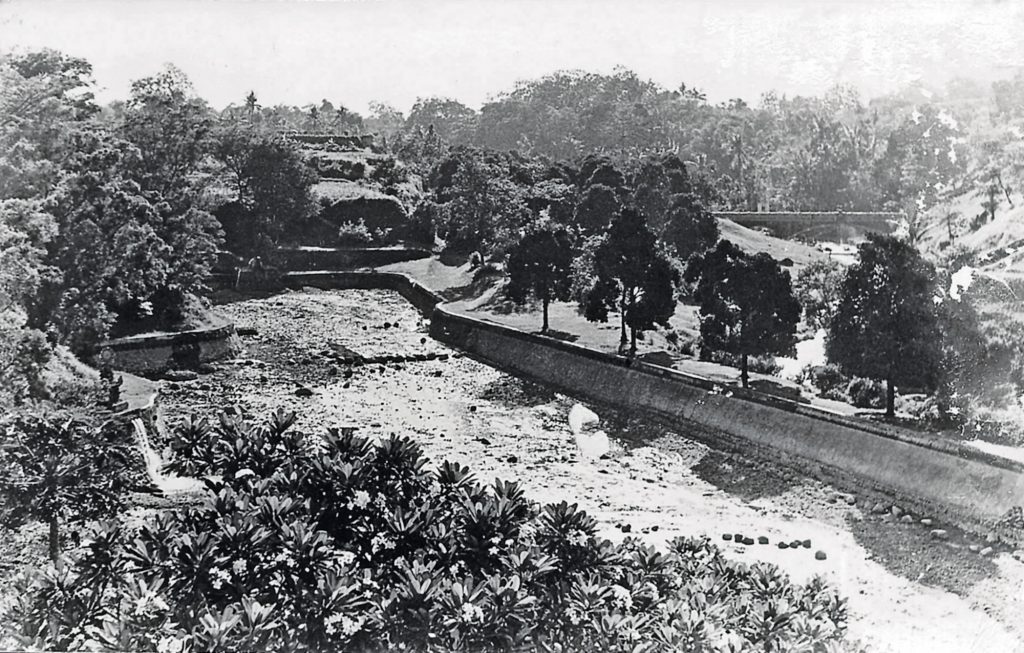 The rajas of West Lombok and East Bali were great aesthetes and water-garden builders: it is sad that their legacy is not being protected from the hands of mediocre meddlers. Very little of the original charm of any of the gardens remains; I was lucky to visit all of them in the mid-1970s when they were still poetic and romantic. Here are some of the photographs I took. Annual Walkabout of the God of Uluwatu to two palaces in Denpasar, 21st and 22nd April, 2016 In the early 19th century the great god of the Pura Luhur, Uluwatu (16th century Moksa-site of Bali’s most revered saint Dang Hyang Dwijendra) enjoyed a celestial friendship with Cokorda Sakti Kesiman, the prince of Kesiman Palace in East Denpasar.
The rajas of West Lombok and East Bali were great aesthetes and water-garden builders: it is sad that their legacy is not being protected from the hands of mediocre meddlers. Very little of the original charm of any of the gardens remains; I was lucky to visit all of them in the mid-1970s when they were still poetic and romantic. Here are some of the photographs I took. Annual Walkabout of the God of Uluwatu to two palaces in Denpasar, 21st and 22nd April, 2016 In the early 19th century the great god of the Pura Luhur, Uluwatu (16th century Moksa-site of Bali’s most revered saint Dang Hyang Dwijendra) enjoyed a celestial friendship with Cokorda Sakti Kesiman, the prince of Kesiman Palace in East Denpasar. 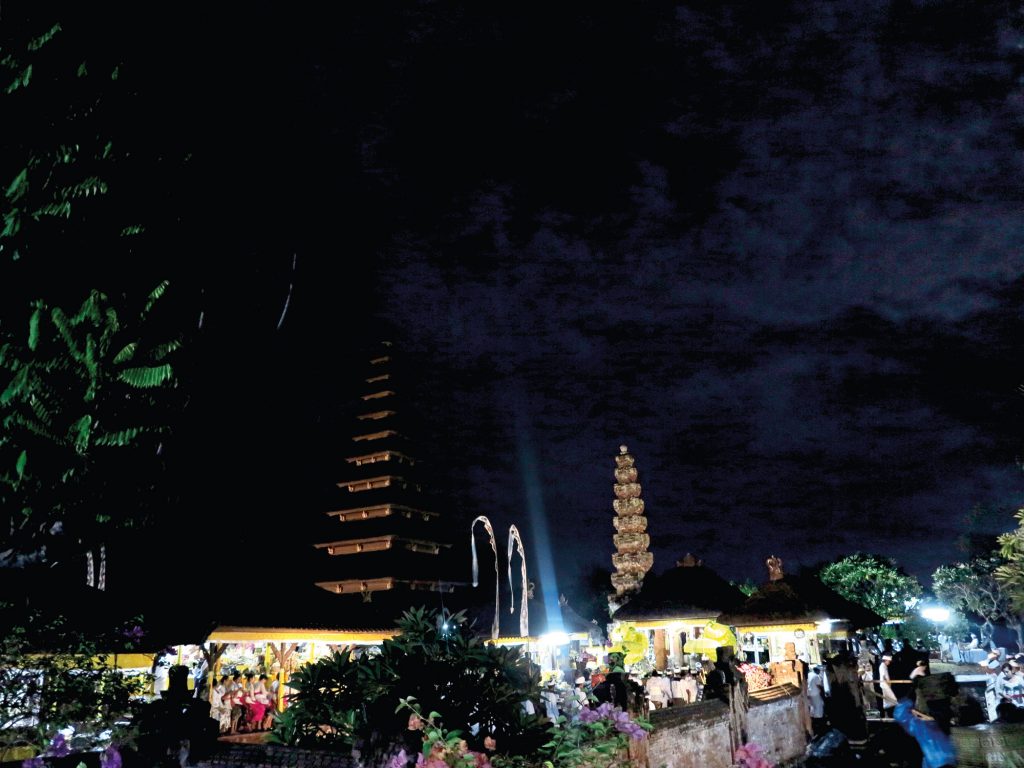 To this day the God of Uluwatu visits that palace on the day of its tetoyon, the anniversary of the family house temple (Merajan Agung). The night before, the god stops on his way to Kesiman at Pura Tambangan Badung, the ancestral temple of the rival palace Puri Pemecutan. Today, the eleventh full moon, I took some friends to Pura Tambangan, Badung to pray, and we bumped into Bhatara Luhur, the god of Uluwatu, at the crossroads. Here is my Facebook post of the occurrence: Such a poignant moment in the middle of Denpasar late afternoon yesterday. I was on Jalan Hassanuddin in front of Puri Pemecutan Palace, heading for Tambangan Badung temple, when I spied the head of a procession bearing sugar cane stalks and not much else. Traffic heading west was stopped by a group of well-dressed officers. We are allowed to park at the base of the CPXI puputan memorial statue and take in the scene.
To this day the God of Uluwatu visits that palace on the day of its tetoyon, the anniversary of the family house temple (Merajan Agung). The night before, the god stops on his way to Kesiman at Pura Tambangan Badung, the ancestral temple of the rival palace Puri Pemecutan. Today, the eleventh full moon, I took some friends to Pura Tambangan, Badung to pray, and we bumped into Bhatara Luhur, the god of Uluwatu, at the crossroads. Here is my Facebook post of the occurrence: Such a poignant moment in the middle of Denpasar late afternoon yesterday. I was on Jalan Hassanuddin in front of Puri Pemecutan Palace, heading for Tambangan Badung temple, when I spied the head of a procession bearing sugar cane stalks and not much else. Traffic heading west was stopped by a group of well-dressed officers. We are allowed to park at the base of the CPXI puputan memorial statue and take in the scene. 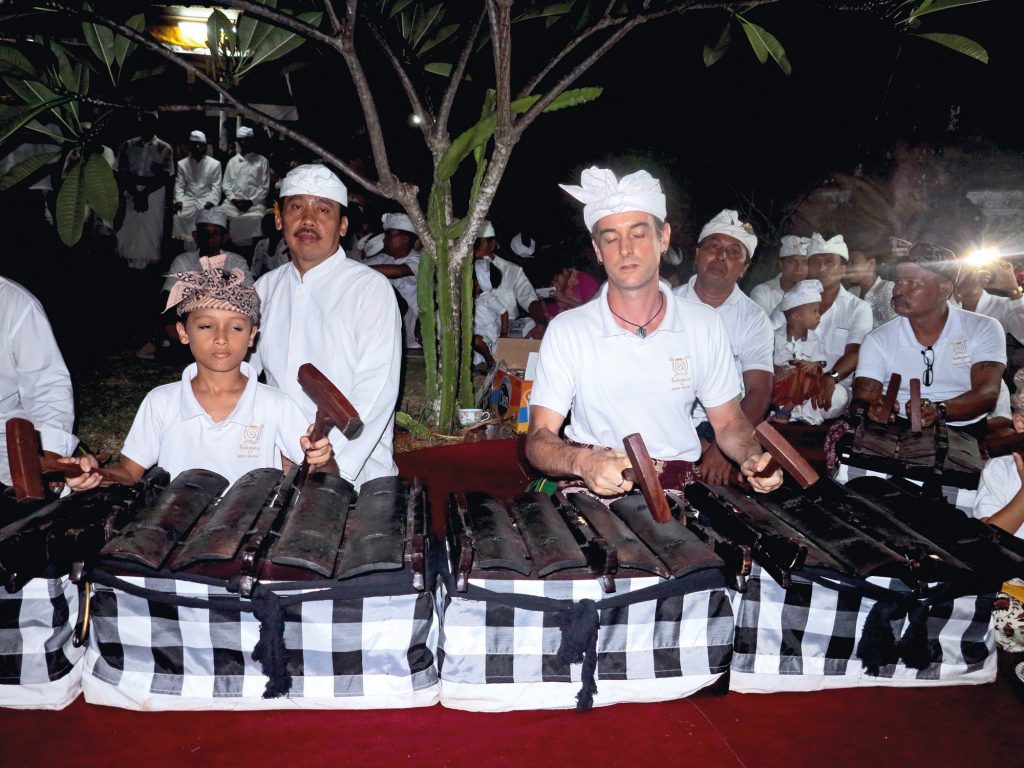 The drums were sounding in Denpasar’s most revered tower opposite, as I hurled myself out of the car and crossed the road. From the south, from the direction of Setra Badung cemetery, the god of Uluwatu was approaching with his own spritely bleganjur gamelan, an angklung, a team of beefy pecalang guards and a phalanx of priests. The Pura Tambangan priests started to weave the light fantastic as the Uluwatu procession approached — four directions of heavy traffic were stopped to marvel at this ancient ritual.
The drums were sounding in Denpasar’s most revered tower opposite, as I hurled myself out of the car and crossed the road. From the south, from the direction of Setra Badung cemetery, the god of Uluwatu was approaching with his own spritely bleganjur gamelan, an angklung, a team of beefy pecalang guards and a phalanx of priests. The Pura Tambangan priests started to weave the light fantastic as the Uluwatu procession approached — four directions of heavy traffic were stopped to marvel at this ancient ritual. 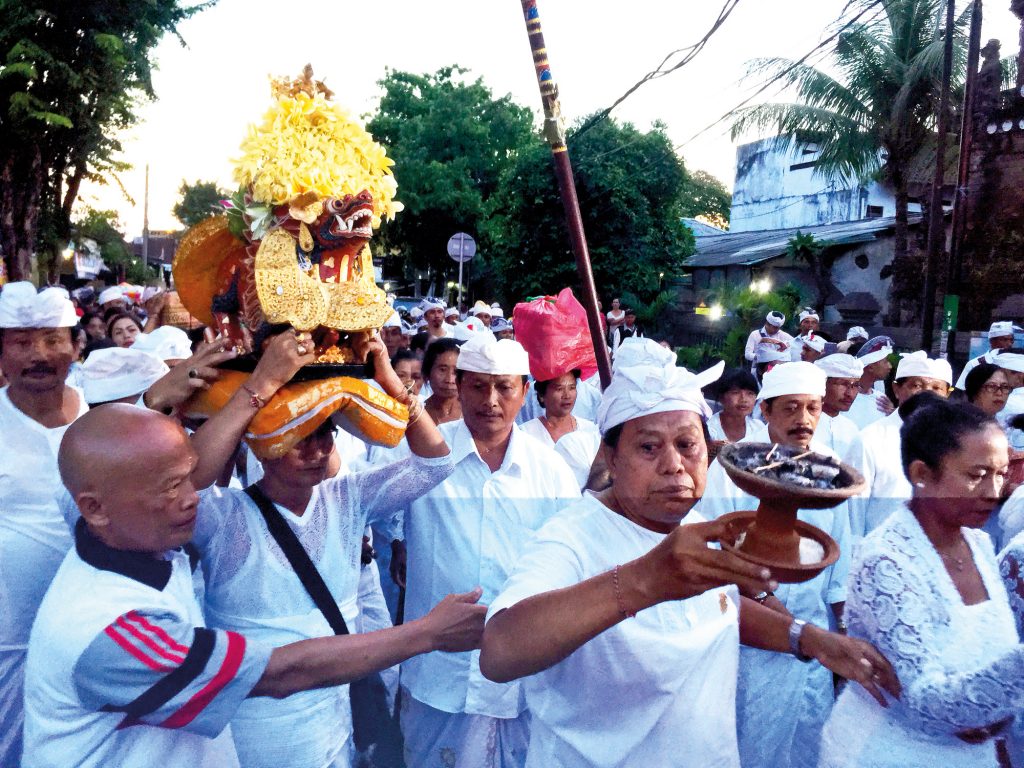 (see video: https://www.youtube.com/watch?v=zICHOQ72FXc). 22nd April, 2016: to Merajan Agung Puri Kesiman for the Tetoyan anniversary The moated family house-temple at Puri Kesiman — a survivor from the 17th century — is the most beautiful house-temple in the land. Its gate matches the gates of both Pura Uluwatu and Pura Sakenan, on Serangan Island. It has an eleven-tiered stone pagoda, called a prasada, where the god of Uluwatu presides during his annual homage. Tonight I am greeted by the prince and his attractive wife as I enter the temple and am led to the small court where my old buddy Kiwi musicologist Vaughan Hatch, his Balinese wife Evie, and their son are playing the selonding gamelan. Puri Kesiman has always had a close connection to westerners, starting with Danish trader Mads Lange in the early 19th century. Mads Lange was married to a Tabanan lass by Cokorda Sakti, inside Puri Kesiman. His daughter married the Sultan Ismail of Johor, Malaysia. Thus all the Sultans of Johore are related to hundreds of Danes. It is a beautiful night in the water-temple, under the full moon, with the hundreds of devotees from Pecatu Village, near Uluwatu, and the very extended palace family.
(see video: https://www.youtube.com/watch?v=zICHOQ72FXc). 22nd April, 2016: to Merajan Agung Puri Kesiman for the Tetoyan anniversary The moated family house-temple at Puri Kesiman — a survivor from the 17th century — is the most beautiful house-temple in the land. Its gate matches the gates of both Pura Uluwatu and Pura Sakenan, on Serangan Island. It has an eleven-tiered stone pagoda, called a prasada, where the god of Uluwatu presides during his annual homage. Tonight I am greeted by the prince and his attractive wife as I enter the temple and am led to the small court where my old buddy Kiwi musicologist Vaughan Hatch, his Balinese wife Evie, and their son are playing the selonding gamelan. Puri Kesiman has always had a close connection to westerners, starting with Danish trader Mads Lange in the early 19th century. Mads Lange was married to a Tabanan lass by Cokorda Sakti, inside Puri Kesiman. His daughter married the Sultan Ismail of Johor, Malaysia. Thus all the Sultans of Johore are related to hundreds of Danes. It is a beautiful night in the water-temple, under the full moon, with the hundreds of devotees from Pecatu Village, near Uluwatu, and the very extended palace family.






